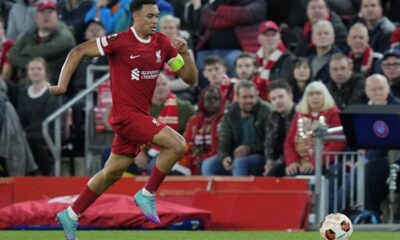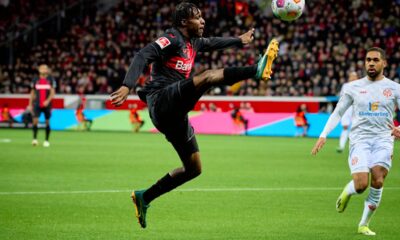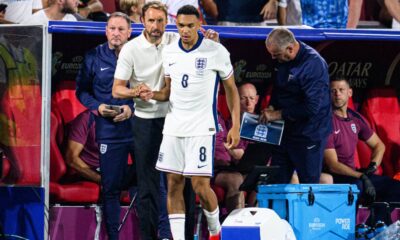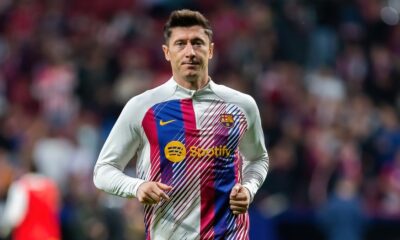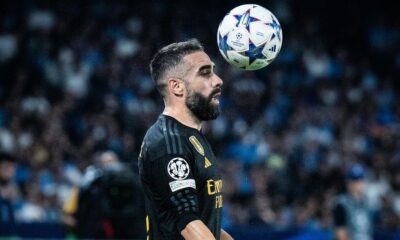Football
Stories of the faithful: the eternal captain of Real Madrid and an example to the young Raúl González Blanco
Real Madrid has many legends in its club history, but one of them stands out very high. Raúl González Blanco was a goalscorer, a leader and a beloved captain, but he was also a great man and set an example to younger footballers with his exemplary behaviour.
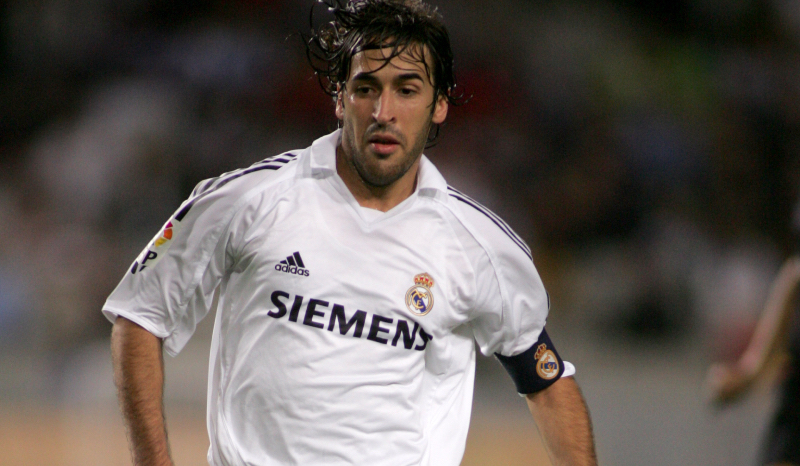
Real Madrid has many legends in its club history, but one of them stands out very high. Raúl González Blanco was a goalscorer, a leader and a beloved captain, but he was also a great man and set an example to younger footballers with his exemplary behaviour.
One of the club’s greatest icons, the face of Real Madrid at the start of the 21st century and one of the best goalscorers in history. The club described him on its website as follows:
“A born winner, an undisputed leader and a Madrid fan. A symbol of Real Madrid, an eternal captain who represented Madrid’s values on the pitch. A striker with incredible instincts who gave his all in every game. A role model for everyone who ever dreamed of becoming a footballer.”
But let’s go through Raúl’s journey from the beginning. He was born on 27 June 1977 in San Cristobal de los Ángeles, a suburb of Madrid. But he got his footballing start not in the academy, but on the street, on a patch with his mates.
“I think I started playing football before I was born. My mother called me for dinner and I didn’t want to go home. Until I was 11, my football education was just on the street with my friends. If I didn’t have anyone to go play with, I kicked against the wall. That became my best friend,” Raul recalled of his childhood.
The elderly “Dani”
The interesting thing about Raul’s strong leg is how it was. Every footballer has a stronger one, a lot of left-handed footballers are orthodox, for example, and the weaker ones have only to lean on. With Raúl, however, both legs are often cited as strong. He was right-handed when he was young, but after a serious injury he had to start using his left leg more, which was later cited as his strong leg. He is also said to have six toes on his right foot, but Raúl himself has never spoken of this.
It wasn’t until he was 11 that Raul joined an organized team, starting in his native San Cristobal. But his beginnings were not so smooth. Cristobal only accepted children from the age of 13, so to get Raúl on the team, he forged his ID card and wrote the name Dani on it, had his picture taken wearing glasses to make himself look older and added 2 years to his age.
But his talent was soon spotted and he soon moved on to Atlético Madrid, who his father supported. He was a big supporter, after all.
“My father was an electrician – we were a hard-working family. But he was a great support, taking me to games and training sessions. He demanded good performances from me, but he always supported me,” Raúl recalled of his family’s support.
He lasted two years with the Colchoneros before moving to Real Madrid’s prestigious academy. He first joined Valdebebas in 1992 and didn’t take off the white jersey until 2010.
Raúl impressed enough to join professional football in the 1994-95 season. As a 17-year-old, he scored 16 goals in just 9 games for Real Madrid C, which impressed then-coach Jorge Valdano.
First start for the Real Madrid A-team
A member of the legendary Quinta del Buitre gang, he was then coaching Real Madrid at the age of 40, so he wasn’t afraid to give youngsters a chance. So he called up Raúl to the A-team, who made his debut for Real Madrid at the age of 17 years and 124 days. It was a club record at the time, later broken by Alberto Rivera.
Raúl’s debut came on 29 October at La Romareda stadium against Real Zaragoza. Immediately on his first start he passed for a goal, but he saved a bigger welcome for the Santiago Bernabéu. A week later, Real welcomed Atlético in the derby and Raúl scored a beautiful left-footed goal into the crossbar to win 4-2. In his debut season, Raúl ended up playing in 28 games and helped to score nine goals in the title.
In his second season, Raúl made his way into the starting line-up and his numbers were impressive for an 18-year-old. 19 goals and 1 assist in 40 La Liga games, 6 goals and 2 assists in 8 Champions League games and one goal in the Copa del Rey. Individually he did well, but not for the team and it was coach Valdano who got the sack. Real eventually finished sixth and failed to qualify for the Champions League.
But Vicente del Bosque took over Los Blancos and made it a winning machine, and so did Raúl. He has scored 21 goals and added 8 assists in 42 league games. Real Madrid thus took back the league title, which was Raúl’s second in his third season.
And in the next one, he added another big milestone. In fact, Real won the Champions League in 1997/98, Raúl’s season was a bit weaker in terms of goals, scoring 10 goals in the league and 2 in the Champions League, but he was still an important part of the squad.
The Raúl phenomenon
Gradually, Raúl became a phenomenon in Spain. And so the invitation to the national team did not wait for him, where, coincidentally, he made his debut against the Czech Republic on 9 October 1996. He played the whole match at Letná in Prague during the 1998 World Cup qualification, which ended 0:0. He scored his first goal for the national team in his third match, hitting the net for Yugoslavia at the Mestalla Stadium in Valencia.
He gradually became a key player in the Spanish national team. But he was not lucky enough to achieve team success. He took part in the 1998, 2002, 2006 World Cup and the 2000 and 2004 European Championships, but never won gold, the golden generation came after him. The most painful moment came at EURO 2000. In the quarter-final against France, Spain were losing 1: 2 and Raúl went to kick a penalty which he gave away.
In the Spanish national team in 2002 he became captain and later the top scorer in history, his tally stopped at 44 goals. So far, the only one to surpass him is David Villa.
Records and milestones
Back to his club career. In the 1998/99 season, Raúl set his goalscoring record in La Liga. he scored 25 goals in 37 games and it was the most productive league season of his career. However, it didn’t lead to any trophies and it wasn’t until the following season that Real could celebrate great success again.
In 1999/2000 Real Madrid dominated the Champions League and Raúl contributed 10 goals in 15 games. He added 17 league goals and was slowly becoming the best striker in the world.
On 15 April 2000, he scored his 100th La Liga goal against Zaragoza, still only 22 years old. He never stopped scoring goals and was a key player in the successful era of Real Madrid at the beginning of the 21st Century. He celebrated the La Liga title in the 2000/01 season, won the Champions League a year later, and celebrated winning the league title again the following season.
It was in 2003 that he took on further responsibility. In fact, after Fernando Hierro’s departure, he became Real Madrid’s first captain and wore the armband until his departure in 2010. At the age of 27, he became the youngest captain in Real Madrid’s history. In 2005, the footballer nicknamed “El Ferrari” became the first player to score 50 goals in the Champions League. He also became the first player to make 100 starts in the millionaire competition.
Overall, I’d pause a bit on the Champions League. That was his competition. Raúl dominated it three times, and for a long time he was also the record goalscorer, with 71 goals. This record seemed insurmountable until a certain Cristiano Ronaldo came along and scored twice as many goals in the Champions League.
It’s funny how football has moved on, back then Raúl’s record was considered incredible and when the word Champions League was mentioned, everyone thought of Raúl. And today it’s completely different.
With each goal he scored, Raúl gradually entered the history of Real Madrid. He won the league title in the 2006/07 and 2007/08 seasons.
Full list of Real Madrid trophies
La Liga – 6 times
Spanish Super Cup 3 times
Champions League 3x
Intercontinental Cup 2x
Uefa Super Cup 1x
Hispersonal record stands at 741 games, 323 goals.
Raúl has also made Spanish football history. Pep Guardiola declared him the best Spanish footballer in history – a great honour coming from a Catalan.
Throughout his career, he has been admired not only for his goals, assists and his play. Raúl was considered a footballing gentleman, a role model for the younger generation. He never had any excesses, he didn’t even have any tattoos, he was a complete professional and always left 100% on the pitch. Moreover, he never saw a single red card in his entire career.
He also showed his devotion to football in his family life. Raúl has five children, four sons and one daughter. He named his eldest son Jorge, in honour of Jorge Valdano – the coach – who first sent him to play for Real Madrid’s A-team. At Raúl’s goal, you may recall his frequent celebration – kissing the ring. It was his way of showing his love for his wife, Mamen Sanz.
He has always had great love and respect for Real Madrid. He set an example with his behaviour on and off the pitch and remained loyal to the white colours for virtually his entire career. His seven on his back made history, CR got a nine because of him. He was also nicknamed “Eterno capitán”, the eternal captain, for his behaviour.
No one could imagine his departure, yet in 2010 he came. “It’s a difficult day for me. I still feel like a footballer and I will continue to play, but I will always be loyal to Real Madrid. I have tried to give everything to this club. Being a Real Madrid player is the biggest dream you can imagine. Today, more than ever, I want everyone to know that with every move, tackle or gesture on the pitch I tried to give my best,” Raúl said as he bid farewell to Madrid.
After leaving Real, he had several offers from Russia, Qatar and the USA, but Raúl eventually chose Schalke, who were to play in the Champions League in the 2010-11 season. Even in Germany, his goalscoring streak didn’t stop. In two years, he scored 40 goals and added 21 assists in 98 games, helping Schalke to the DFB Pokal and the Super Cup.
After two years, he had already retired from his European career and joined Qatar’s Al Sadd. After two years he announced the end of his career, which he changed his mind after a few months and played one season for the New York Cosmos. After that, he really finished his rich career.
Coaching career
He proved his commitment to Real Madrid even after his career ended. When he wanted to start his coaching career, he did so nowhere else but at Valdebebas. He started with the youth, but after a year he moved on to Castilla, Real Madrid’s second highest team.
Upon joining, he immediately began to instil the moral principles and values of the club into the youngsters. He banned the players from wearing big headphones, luxury bags, backpacks and handbags from Louis Vuitton, Guci and the like. Also unnecessary luxury jewellery. Castilla plays in the third league, where the players are often semi-professional. Raúl thus finds it disrespectful for players to arrive at their stadium with one item more expensive than the entire salary of the opposing team.
At the same time, he demands total discipline from the players. It prohibits talking back to coaches and also complaining about the referee’s decision. After every match, Castilla players must come up to the referee and thank him, as well as shake the hand of the opponent. He once punished a couple of players who refused to shake hands with an opponent after a heated match with Navalcarnero.
The club is very happy with his work, so much so that he was even considered as a candidate for head coach of the A-team after Zinedine Zidane left. But in the end, Carlo Ancelotti’s experience was chosen, with Raúl’s time to come. And there is probably no player better suited to the heart of Madrid’s squad that the fans would rather see on the bench.
Source

